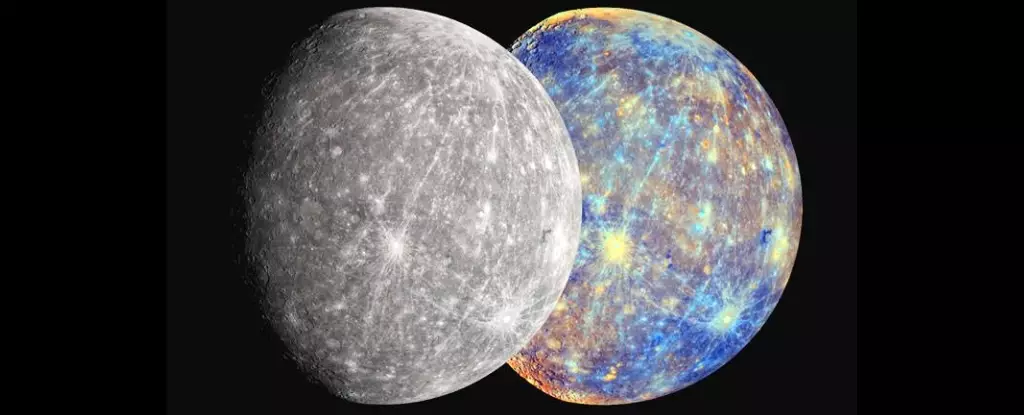In the bustling summer of 2025, planetary enthusiasts and casual skywatchers alike are presented with a rare opportunity to glimpse the elusive planet Mercury. Unlike the more prominent planets such as Venus or Mars, Mercury’s closeness to the Sun and its proximity to the horizon make it a challenging object, often shrouded by twilight. However, this July, Mercury reaches its greatest elongation — the most significant separation from the Sun in the sky — offering an optimal window to observe this mysterious, innermost world. This event is not just astronomical trivia; it’s a chance for enthusiasts to connect with a planet that has captivated humanity for centuries, cloaked in layers of mystery and scientific intrigue.
For those in North America and beyond, the evenings of July are especially promising. As dusk settles, Mercury’s brightness peaks at magnitude +0.5, making it one of the most visible moments for the year. Its position about 10 degrees above the western horizon roughly 30 minutes after sunset allows for targeted observation from many vantage points. This event occurs shortly before Mercury’s aphelion — the farthest point from the Sun — on July 14th, adding a layer of celestial timing that underscores the dynamic nature of our solar system. Observing Mercury during this period is a testament to the incredible dance of orbital mechanics, where planetary positions align to create fleeting opportunities for discovery.
However, Mercury’s visibility isn’t just a matter of happening to be outside at the right time. Its orbit is highly elliptical, and the angles at which it appears in the sky vary significantly with seasons and observer latitude. Consequently, attempting to spot Mercury during other times of the year can be frustrating. July’s elongation provides a rare chance because Mercury is positioned favorably—traversing the dusk sky in a relatively accessible spot for observers. This ephemeral window prompts enthusiasts to prepare their telescopes and binos, knowing that such opportunities are scarce and fleeting.
Furthermore, Mercury’s proximity to the Sun adds an element of challenge. Its twilight appearances are often brief, fading into the sunset glow or obscured by atmospheric haze. Yet, the thrill of spotting this tiny planet, a featureless disk in comparison to the dramatic spectacle of planets like Jupiter or Saturn, is profoundly satisfying. Notably, Mercury will showcase an approximately half-lit disk at greatest elongation, mirroring the phase of the Moon’s crescent. This phase progression during July—leading to a thinner crescent as the planet nears conjunction—offers an engaging visual experience, especially for those equipped with telescopes that can resolve the planet’s subtle shading.
Astrological Myths vs. Scientific Marvels: Mercury’s Unique Behavior in 2025
Despite the planetary alignment, modern science dismisses the astrological tales linking Mercury’s retrograde to chaos on Earth, yet it remains a captivating object to track through the sky. Starting July 17th, Mercury enters a period of apparent retrograde motion—a byproduct of the relative timing of Earth and Mercury’s orbits—not because it influences human affairs, but because of the optic illusion this motion creates. Observers who follow Mercury’s journey during this time can witness it reversing direction against the background stars, a display that has historically fascinated both astronomers and laypeople alike.
This retrograde, combined with Mercury’s inferior conjunction on July 31st—where it passes directly between the Earth and the Sun—marks a significant phase in its orbital cycle. Although no transit occurs on this date, it skinlesly reminds us of Mercury’s traversal across the solar face—an event that won’t recur until 2032. Conversely, the upcoming November 13th, 2032, transit will yield about a 7.5-hour window to observe the planet drifting across the Sun’s disc. Such rare transits are invaluable for scientific investigations, allowing precise measurements that inform our understanding of solar planetary dynamics.
Interestingly, Mercury has also revealed modern mysteries, such as its exotic exosphere containing a tail of sodium ions—a phenomenon quite similar to a comet’s tail. Amateur astronomers, equipped with modern photography tools, have managed to capture these fleeting plumes, blurring the lines between professional and amateur science. These discoveries challenge previous notions of Mercury as a barren, cratered world and hint at more active processes at work, powered by its intense solar wind exposure.
How to Make the Most of Mercury’s July Appearance
For anyone eager to witness Mercury this summer, preparation is key. Find a location with an unobstructed view of the western horizon, preferably away from city lights and atmospheric haze. Bring a telescope or binoculars capable of zooming in on the faint planet, and time your viewing for about 30 minutes after sunset. Keep in mind that Mercury’s brightness and size are modest compared to the brighter planets, so patience and clear skies will vastly increase your chances of success.
The period around July 2nd offers an added visual bonus: Mercury’s proximity to the open cluster Messier 44, popularly known as the Beehive, provides an excellent guiding point for skywatchers. On July 20th, the lunar occultation of the Pleiades showcases the interplay of planetary and lunar movements—an event that underscores the intricate choreography of our celestial neighborhood.
As you observe Mercury, consider its place in history. From ancient skywatchers marking its movements to modern spacecraft like NASA’s MESSENGER and JAXA/ESA’s BepiColombo, our understanding of Mercury has deepened tremendously. Yet, it remains a world shrouded in silence and mystery, with many secrets still to uncover. Viewing it during this fleeting elongation is both a nod to our ongoing curiosity and an invitation to contemplate the complexity of our solar system.

